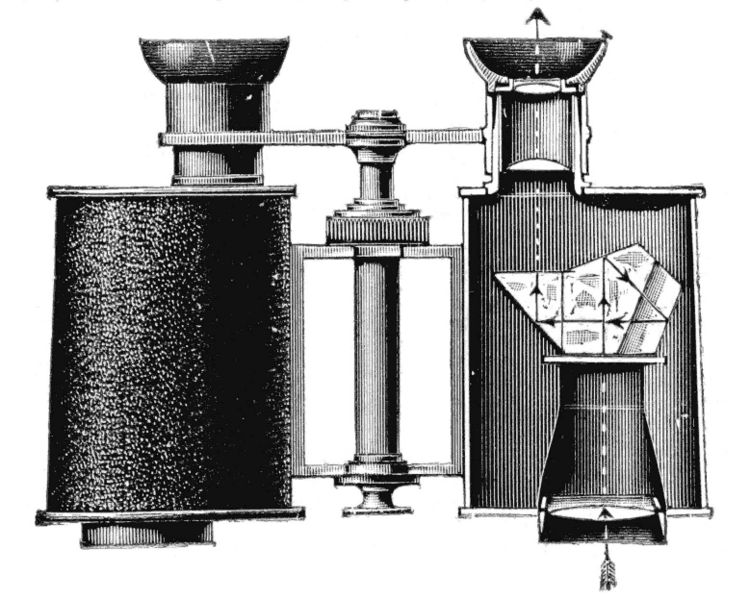While a telescope certainly has a "scientific" panache, a good way to start observing is with a pair of binoculars. Very nice binoculars can be bought very inexpensively these days, pairs that used to cost hundreds of dollars are available at sporting goods stores for under a hundred, often less than $50.
A good starter pair should be useful for things other than astronomy. That way you'll get more use out of them. They don't need to be huge, and they shouldn't be too high of a power of magnification.
Numbers on the Binoculars
The numbers used to describe binoculars are usually written something like "7x35" or "15x60". The first number is the magnification of the binoculars. I recommend a magnification of 7x or 8x, certainly 10x or less unless you're expecting to use them on a tripod all the time. Higher magnifications can't be held steady enough to use hand-held. I have a pair of 20x binos that don't really work when hand-held.
The second number is the size of the area that lets light in at the front of the binoculars, the front lens, in millimeters. So a pair of "7x35" binos has front lenses that are 35mm across. A pair of "8x50" binoculars has front lenses that are 50mm, or just over 2 inches, across. The larger the second number, the more light the binoculars collect. So all else being equal, a pair of 50mm binos would be better for astronomy (where we're looking at dim things_ because they collect more light from what you're looking at than a pair of 35mm.
But, if this number gets too big, the binoculars get larger and heavier. That means they're harder to hold steady, and they're less likely to get packed along when you go somewhere. I have pairs that are 35mm and 60mm, and the 35mm pair get used a lot more often than the 60mm pair just because they're more convenient.
So for starting out, I recommend something from 7x35 at the low end to something like 8x55 at the high end.
Avoid binoculars with "ruby" lenses or coatings. These are good for getting rid of glare in the daylight, but we aren't worried about glare and we want to get all the light we can.
Other than that you can get whatever features you are willing to pay for, but remember that you'll be looking upward--so make sure the binos will stay focused when you do that--and you don't want extra features getting in the way of the basic use of the binos.

What can I see?
Binoculars can see details on the Moon. You can also see the planets, but you won't see them as disks, just as colored points of light. You can see moons of Jupiter and Saturn. Binoculars are good for looking at globular clusters and star clusters, and you can see several bright nebulas, like the Orion Nebula. A few of the brighter galaxies can also be seen as fuzzy patches in the sky.
Even with a telescope, binoculars make a good adjunct. I use mine to help me find new objects in the sky for my telescope. I'll use the binoculars to get my bearing on where the new object is (when it's something I can't see by directly looking at it with my eyes), before I try to get it in the scope.






